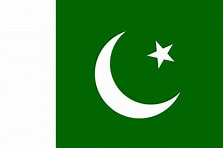New Delhi. India’s first Indigenous Aircraft Carrier INS Vikrant successfully completed her first round of Sea Trials this August 4 to 8 to check, recheck and validate the ship’s propulsion systems, auxiliary systems and design parameters.
Indications are that all is well, and preparations are now being made to fit compartments for various systems, weapons, more wiring, radars, guns and missile stations, computers and of course, crew cabins and facilities. Lifts, and air-conditioned parking space for an assortment of fighter jets and helicopters is a priority, but if you think of it, every fitment is a priority towards a careful, efficient and comfortable operating environment.
The Basin and Harbour trials were fine, and as the Sea Trials progress, the airflow, its deflection and effects on aircraft launch and recovery will be recorded by the test pilots and notations made for drawing SOPs (Standard Operating Procedures). It is a time-consuming process, requiring patience, and necessary to ensure a safe operating environment.
The Sea Trials should take 5 to 6 months.
India’s First Naval Carrier Building Venture
As IAC-I is the country’s first big carrier shipbuilding venture, the knowledge gained would be critical for the Operations Manual to be used by the pilots today and tomorrow. The data has to cover Full Weight Trials, Weapon Systems Trials, and Compatibility of Aircraft and Vessel Trials, from each of the two launch points on the deck. One is for fully-loaded aircraft, and the other for loads specific to a role.
The vessel should be handed over to the Indian Navy for operations, and some more validations by end of 2022, and of course, by then, she would be well integrated also with the Indian Navy’s operational command structures.
There is a high degree of automation in accordance with current technologies. There is sufficient power to reach a top speed of 28 knots, and operate all its systems, with spare power, thanks to the four General Electric GE 2500 gas turbine marine engines, and cruise for about 8000 nautical miles. The vessel has two Elecon COGAG gearboxes.
The new INS Vikrant will be an entirely different and much more lethal platform for defence and sea dominance than the older INS Vikrant which was acquired from the British Royal Navy in 1961 and operated till 1997. It was thoughtful of the Indian Naval planners to think of two aircraft carriers, one for each Eastern and Western Seaboards, that far back.

Networked Navy
As the Flagship of the Indian Navy, she will be connected through dedicated satellites and other means with various naval assets, including submarines, and the Information Fusion Centre that keeps track of nearly every ship in the Indian Ocean Region and coordinates with friendly navies.
INS Vikrant will also keep track of indian aircraft, manned or unmanned like the GA MQ-9B that are the highest on its immediate agenda for acquisition. Two of them are on lease with the Navy at present.
Notably, the Navy and Indian Air Force operate their aircraft in sync and there is coordination with Army assets as required.
Later, the Indian Navy got another carrier, INS Viraat, also from Britain, and she served the Indian Navy from 1987 till 2017. Both these carriers laid the foundations for a deep seagoing Indian Navy, imparting valuable training in concepts and operations of the reach a carrier and her aircraft can provide.
Then, there is the INS Vikramaditya, the totally refurbished after decommissioning by the Russian Navy as Admiral Gorshkov – who incidentally was a friend of India and the Indian Navy has an Officers Mess named as Kremlin in his honour at its Eastern Naval Command HQ at Vishakhapatnam.

The 45,000 tonne Kiev class carrier was renewed with a ramp, and commissioned by the Indian Navy as her flagship carrier in 2013. She carries about 30 combat Mig 29Ks and an assortment of EW (Electronic Warfare) and ASW (Anti-Submarine Warfare) Kamov 31 helicopters.
The Indian Navy is working towards a three-carrier plan, two of which should be operational always and a third under rest and refit and replenishment. For the time being, the Indian Navy Navy is looking for Government approval for a second, bigger carrier of 65,000 tonnes. She will be non-nuclear, and is planned for CATOBAR (Catapult Take Off, Barrier Arrested Recovery) with steam powered catapults.
Naval Chief Admiral Karambir Singh had told India Strategic that the Navy could not be a tethered Navy, and was working towards this capability keeping in perspective the emerging scenario in the Indo-Pacific region and the increasing hostile presence around India.
US General Atomics has offered its new generation EMALS (Electromagnetic Aircraft Launch System), which is now to be used on all future US Navy aircraft carriers.
Indigenous Capability is a Must
Indigenous capability is imperative, and India’s new Indigenous Aircraft Carrier (IAC-I), to be christened INS Vikrant after induction, is a commendable effort. She is designed by the Navy’s Naval Design Bureau (NDB), and has – significantly – 70 percent Made in India components.
Of course, NDB took consultations with foreign design firms from Europe and Russia, and the carrier is built to accommodate some 40 aircraft – Mig 29K Fighters, Kamov 31 Helicopters and the Indigenous Light Combat Aircraft (LCA) Naval when available. Her ramp and lifts, parking, storage facilities and compartments for personnel and systems have been designed accordingly.
I was lucky to be present when Mrs Elizabeth Antony, wife of the then Defence Minister, launched the IAC-I on August 12, 2013 with prayers for the ship’s safety. Priests from Hindu, Sikh, Christian and Islamic faiths graced the Blessings ceremony.
As per naval traditions, a ship is like a Mother, and the launching honours are always accorded to a lady.
Maiden Helicopter Landing
Opportunity was utilised to conduct the maiden helicopter landing by none other than Rear Admiral Pynamuttil Philipose, Flag Officer Naval Aviation, a highly experienced Sea King pilot.
Step-by-step, as the work continues and she goes for more Sea Trials, there would be more tests with heavier loads till finally the fully-built ship with all compartments and systems floats majestically.
Compartments for Weapon and Radars, and Crew
Now that the first round of Sea Trials are over, the Cochin Shipyard where she is being built, will begin the fitment of these compartments and facilities, including Radar and Weapon stations.
A common question is how many aircraft can a carrier carry? The thumb rule is 1 aircraft for every 1,000 tonnes of displacement. The 45,000 tonne INS Vikrant should have an assortment of 40 fighters and helicopters etc.

The Indian Navy has an RFI (Request for Information) for 57 shipboard aircraft, for INS Vikrant and the still-in-planning IAC-II. Dassault, which is supplying Rafales to the Indian Air Force, has offered the aircraft’s naval variant used by the French Navy, while Boeing has offered the F-18 Super Hornet and demonstrated that it can land on a carrier the size of INS Vikrant.
The F-18 is the primary shipboard fighter for the US Navy, and each of the 11 US carriers operates about 90 of them. But they are huge, nuclear-powered, and more than twice the size of INS Vikrant. The US has offered the latest F-18 variant for INS Vikrant to the Indian Navy.

INS Vikrant Specs
IAC-I is 262 meters long and 62 meters wide, and that gives an aircraft adequate clearance and space during launch, recovery, landing and manoeuvring.
About 8 meters of the ship’s hull is underwater.
EW systems are state-of-the-art. There is the MF Star Multifunction Radar as the heart of the systems, a 3-D Air Surveillance Radar from Indra Systemas of Spain for detection of airborne targets and their height determination, Israeli Barak SAMs (Surface to Air Missiles), and 8 Diesel Generators to augment onboard power supply.
Finally, Two Aircraft Carriers
The Indian Navy has always wanted two Aircraft Carriers, had them for some time, and after the induction of INS Vikrant, there will be two carriers of 45,000 tonnes each at least till about 2030.
As a naval aviator and a former C-in-C (Commander in Chief) of the WNC (Western Naval Command), I look forward to the dream of two modern Carriers with the Indian Navy with more and some new generation aircraft, periodically upgraded radars and missiles, EW systems, and comfort of operations that are carefully being integrated by the Cochin Shipyard, the builder.
About author –
Vice Admiral Shekhar Sinha was the Commander in Chief of the operationally active Western Naval Command, responsible for maritime security of Sea Lanes of Communication in Arabian Sea and both, Gulf of Aden and Persian Gulf. Prior to assuming this assignment, he was Chief of Integrated Defence Staff to Chiefs of Staff committee. He has been awarded the Param Vishishth and Ati Vishishth Sewa Medal for exceptional service to the Navy. He has also been conferred with two Gallantry awards. Besides commanding the WNC and heading the Tri-Service Integrated Defence Staff, the author was also the distinguished Gray Eagle, that is, the senior most aviator of the Indian Navy.








